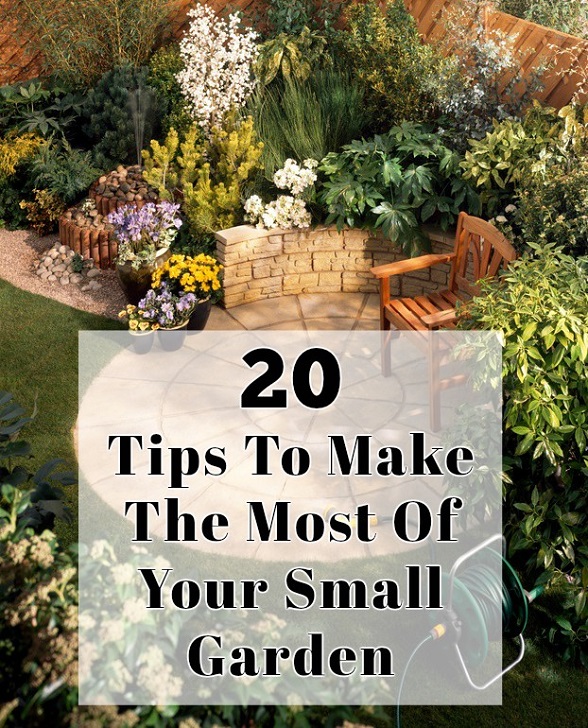
Don’t let the fact that you have a small landscape hold you back from enjoying the benefits of gardening.
Small gardens – or even balcony spaces – have a lot going for them, and can bring you just as much joy as a larger plot! These intimate spaces can be the perfect place to cozy up in the evening, or trap the sun’s rays on summer days.
They’re also easier to maintain than larger spaces, requiring less work, less water and less money.
No matter how small your garden, learn to maximize your space with these 20 clever tricks.
1. Tiered Planters
Make the most of your space with an attractive tiered garden planter. Not only do they add texture and depth to the garden, but they look fantastic filled with a mixture of trailing vines and shrubs.
Learn how to make your own recycled barrel planter here, for under $25!
2. Upside Down Planters
Hang some quirky upside down planters from the porch, tree branches or fencing to save on valuable ground space. They’re ideal for tomatoes, and will save you money on trellising!
Making your own upside down planters is a great way to re-use a variety of household items and leftover food containers – this tutorial shows you how to fashion them from empty milk cartons.
3. Raised Beds
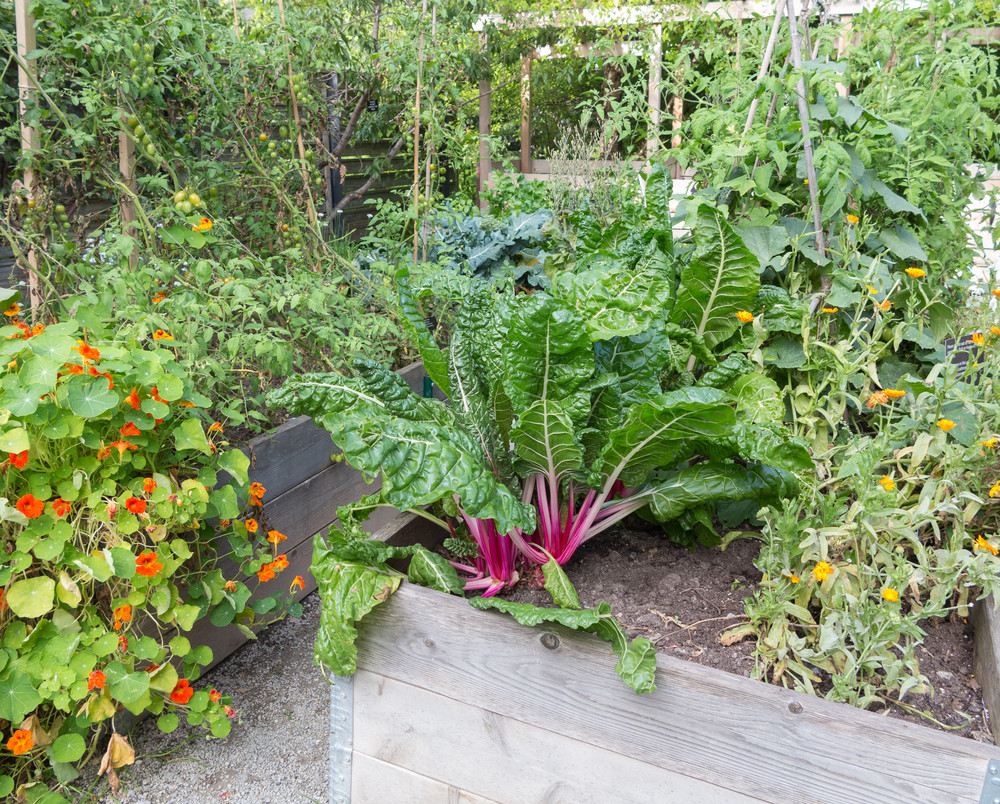
It’s well known that raised beds are one of the most efficient and effective ways to garden.
Traditional raised beds provide extra space on the sides for planting, although the popular framed varieties don’t have this benefit. Nevertheless, many plants along the edges grow over the sides, freeing up space on top of the bed for additional fruit and vegetable varieties.
Raised beds aren’t just functional – they can also be an attractive and unique focal point for your garden!
Check out some of the best unique and fun raised bed ideas.
4. Vertical Gardens
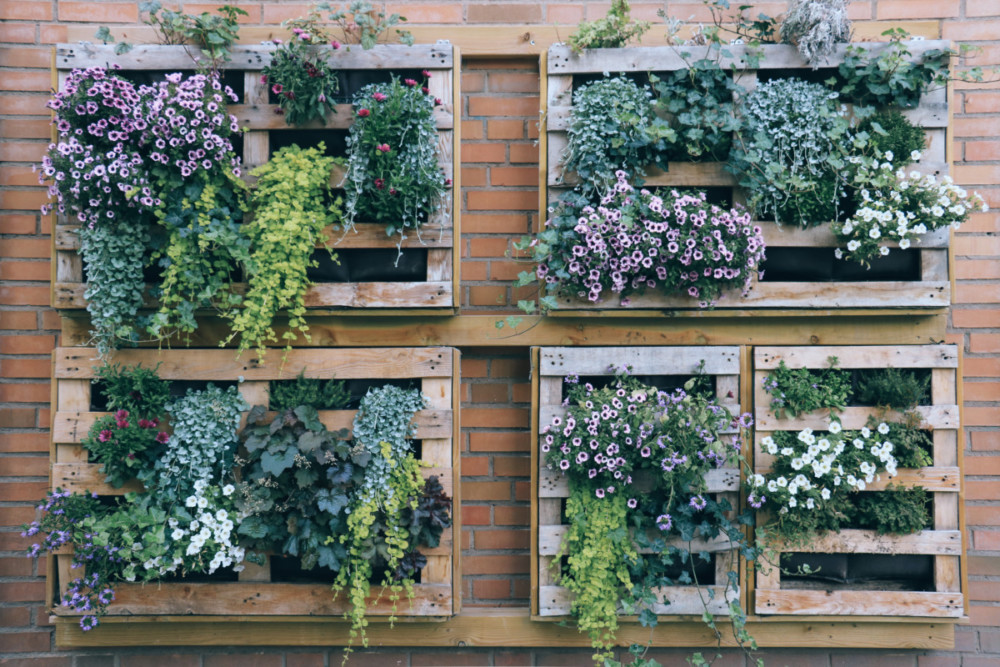
If you can’t plant outward, plant upward! Gardening vertically means you can take advantage of more than just the horizontal surfaces around you.
Vertical gardens add interest and texture, and foster the feeling of being surrounded by greenery. On a practical note, they make tending to your plants so much easier, and minimize pest and disease issues.
This stacked crate planter is perfect for small spaces, as is this succulent-filled piece of ‘living art’!
5. Hanging Baskets & Pots
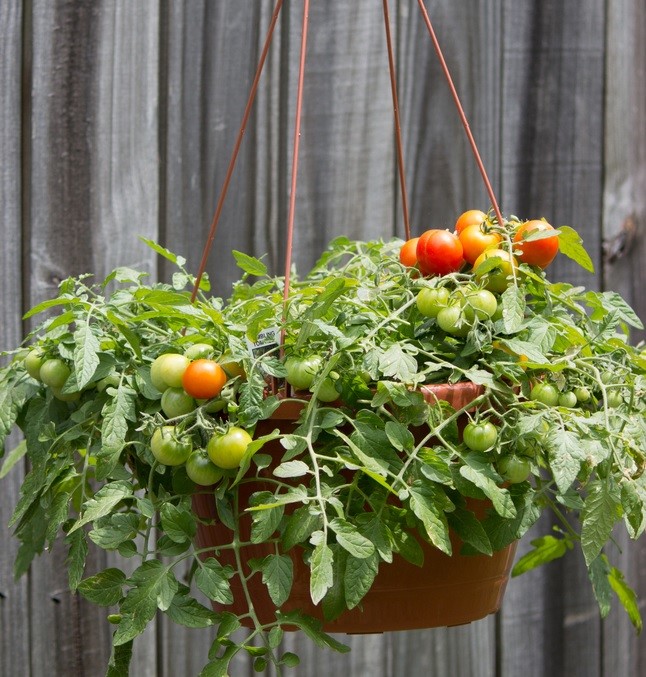
No matter how small your garden (or balcony!), there’s always room for a hanging basket or two. Use a mixture of plants for eye-catching pops of color.
Aspiring kitchen gardeners without much yard space will be happy to learn that tomatoes, strawberries, and herbs like parsley, thyme, mint, and rosemary all grow well in hanging baskets.
6. Create a Focal Point
Focal points aren’t just important in large, open spaces – small gardens benefit from having a feature piece too. They serve to immediately direct the eye, add a sense of flow and purpose, and allow the visitor to slowly take in all the charming things the garden has to offer.
Compact – yet striking – focal points include a cluster of vibrant (or all white) plants, an ornament or bird bath, large rocks, a quirky planter, a bench, or an unusual architectural plant. When it comes to focal points, placement is everything, so play around and see what works in your garden.
7. Dual Functions
In small spaces, it’s important to assign dual roles to as many items as possible.
For example, benches can double up as storage facilities, while arches can serve as supports for climbing plants or to hold hanging baskets. This outdoor dining table not only acts as a fun planter and raised bed, but it makes for an incredibly striking focal point!
8. Different Heights & Areas
Including steps or small platforms in your backyard design can be an understated way of adding texture and a sense of separation. You can also create different experiences within one space.
Other ways of creating the illusion of separation, or several ‘rooms’, is through the clever use of arches, varying flooring materials or clearly defined pathways.
9. Faux Grass
Although not for everyone, adding a faux grass rug can transform a small, concrete yard into a more pleasant outdoor space.
With a few ‘real-life’ potted plants and vertical garden, it will soon start to feel cozy and inviting.
10. Mirrors
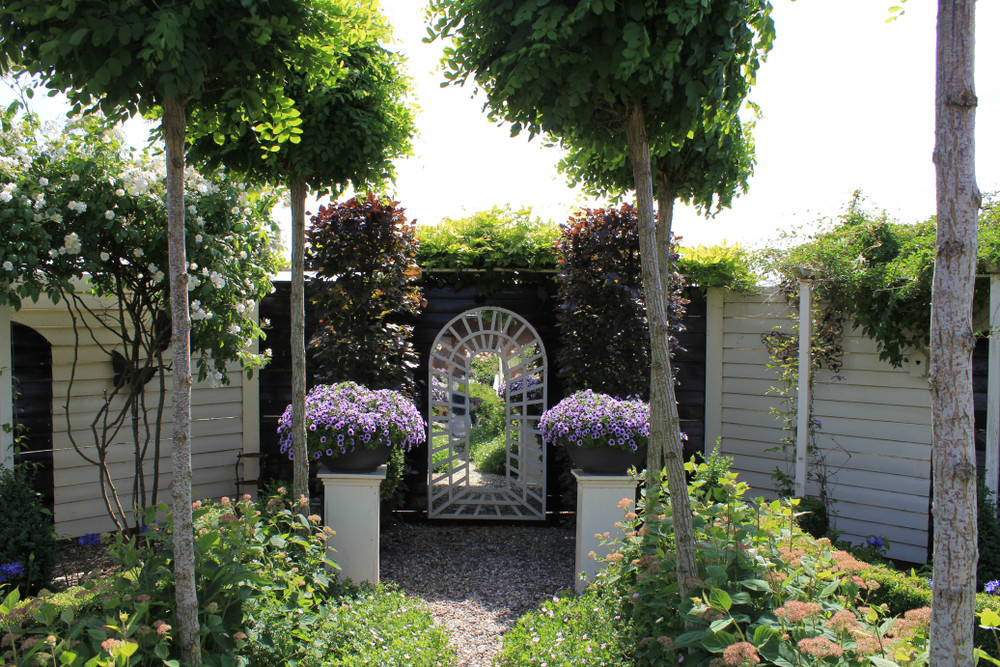
Create the illusion of double the space and greenery with a few strategically placed mirrors.
Anything from a small mirror – to mimic a window-like portal – to a full-length affair resembling a doorway will work. However, remember that the mirrors must have something to reflect so ensure there are plenty of colorful blooms and lush foliage around them!
11. Trellises, Arches, Arbors and Pergolas
These types of structures create the feeling that you are in an outdoor garden ‘room’ and lend an air of mystery to what’s beyond the walls.
They also provide a sense of height and depth, and are fantastic supports for additional greenery in the form of hanging baskets, pots and creeping vines; or even children’s swing chairs.
12. Use Containers
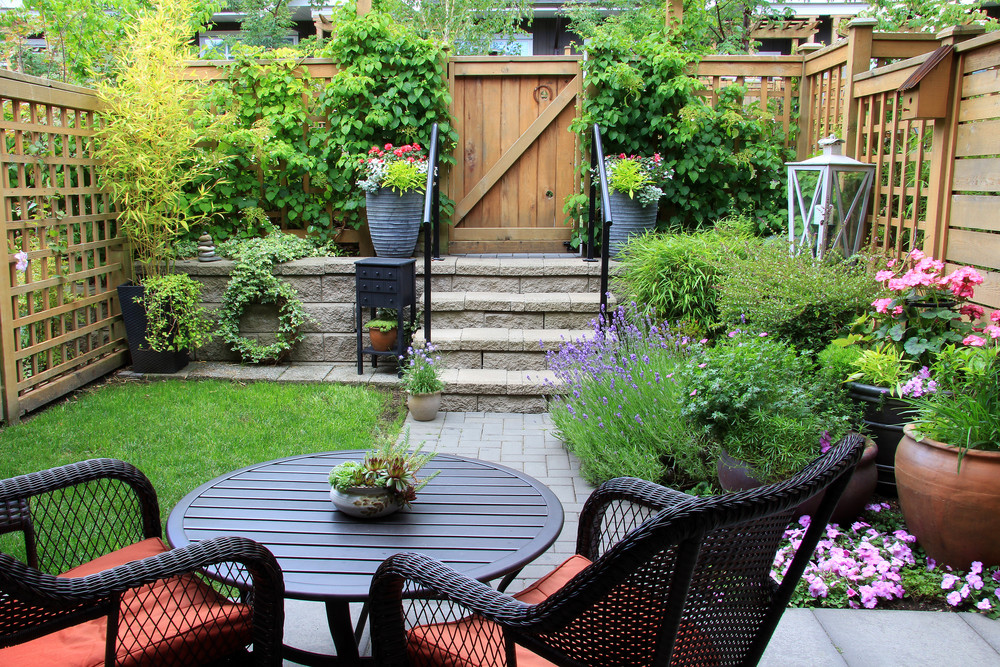
Container gardening has so many advantages over the traditional practice of growing in the ground – including the ability to move your containers to wherever you would like them – even indoors if you prefer!
In small gardens, this function is vital, as it means you can revamp your garden with minimal effort, or create additional space on demand.
Here are 40 unique and fun container gardening ideas to inspire you.
13. Vary Container Sizes
Perspective is hugely important when it comes to the illusion of space. Achieve this by using containers large and small in the garden.
You can also place larger, brighter flowers closer to where you will be viewing them, and position more muted colors and plants with smaller features further away.
14. Hidden Boundaries
If a wall or fence is in plain sight, then it’s going to be very clear just how small your garden really is! Focus your efforts on hiding the boundary line and you will instantly add depth to the yard.
Vertical planters, climbing vines and even your neighbor’s overhanging trees will all help you achieve this goal.
15. Create an Atmosphere
Some of the most enjoyable restaurants and bars are those that create an intimate, cozy atmosphere – and there’s no reason this rule shouldn’t apply to outdoor spaces too!
Use lights, candles, and wood-burning fire pits or table-top fire bowls to heighten your al fresco experience. Check out these mesmerizing ways to use Mason jars in the garden for a variety of DIY outdoor lights and candle holders.
16. Add Movement and Sound
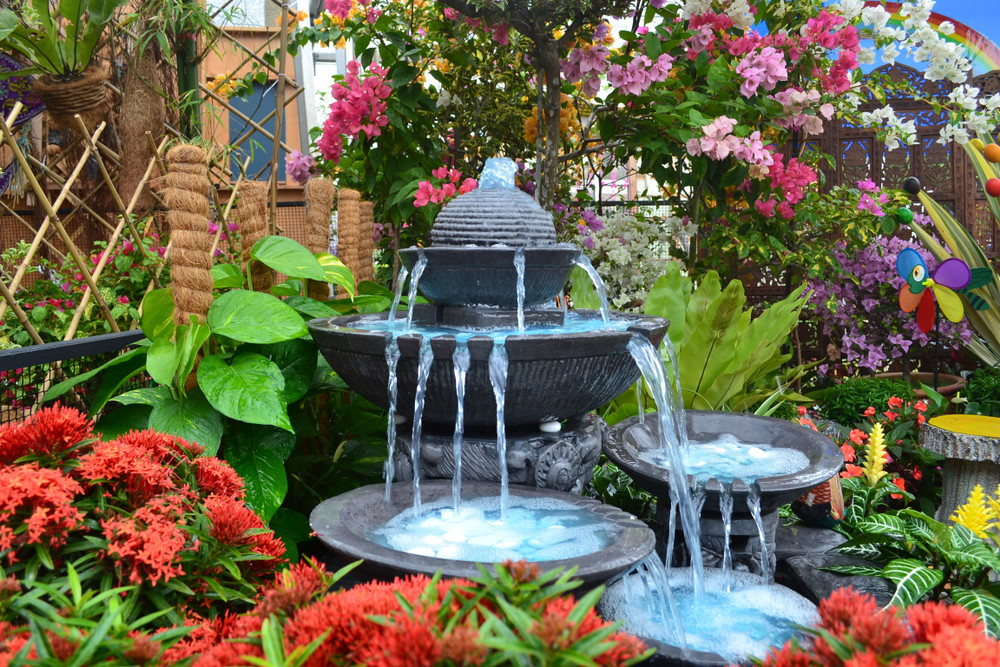
There’s nothing more boring than a flat, lifeless garden. Movement and sound instantly add vibrancy and magic to an outdoor space, meaning you won’t even notice its size.
One of the easiest ways to achieve this is with a water feature – such as this DIY bubble fountain in a pot. Wind chimes, rain chains, and clever planting choices can also create a sense of life.
17. Attract Wildlife
Nothing brings more movement and sound to a garden than wildlife! Contribute to the magical qualities of your backyard – and enjoy the benefits of natural pest control – whilst helping to preserve the local wildlife by offering a safe haven to a variety of creatures.
Simply employ these 20 tips to attract wildlife to your garden and it will be buzzing in no time!
18. Choose Color Wisely
Outdoor color schemes are just as important as indoor ones – perhaps even more so when it comes to small spaces.
Vibrant flowers, shrubs, and features can make a small garden appear lighter and bigger, while neutral walls and flooring keep the eyes away from these boundary lines.
In general, hot colors make a space feel more intimate, while cool purples and blues add depth.
19. Minimize Your Storage Space
Reserve as much space as possible for planting and relaxing by scaling down your storage space.
By repurposing old doors and windows into this cute minimalist shed, you’ll not only maximize available space, but you’ll be forced to say goodbye to a whole lot of unnecessary tools and other garden junk you’ve been hoarding!
Don’t forget the rule of dual function and utilize garden seats, tables and more as sneaky storage solutions.
20. Value your Privacy
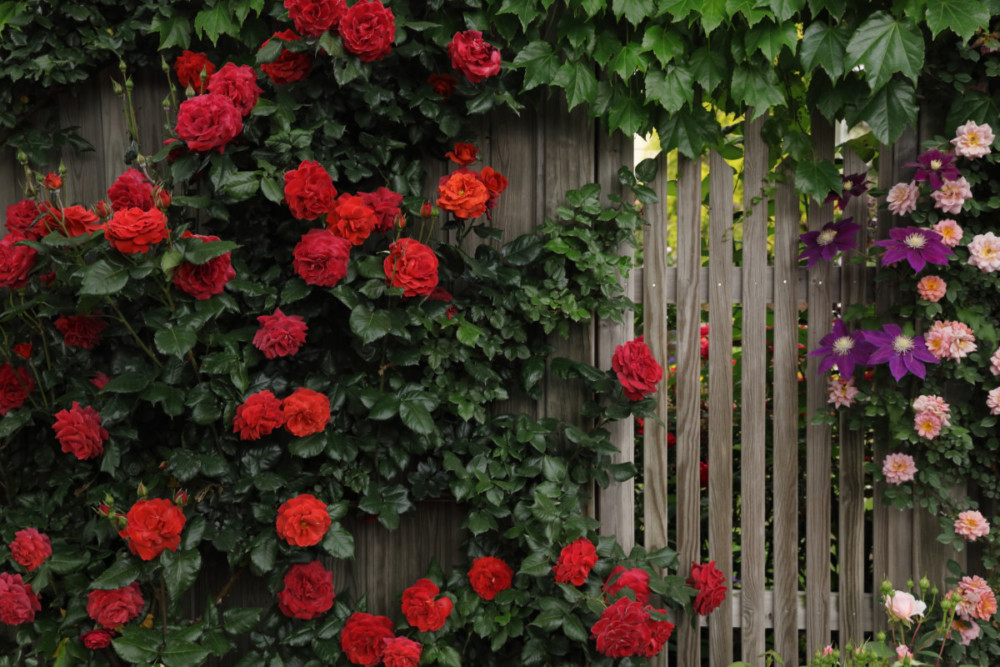
One of the biggest complaints from small garden owners is the fact that they are overlooked by neighbors and those occupying surrounding buildings.
Protect your privacy with some strategically placed arches and pergolas, covered with climbers. These can be used to create a secluded seating area or sunbathing spot.
Some trees around the boundary line can also hide concrete walls and prying eyes – just make sure you’re not blocking out the sun’s rays too!
